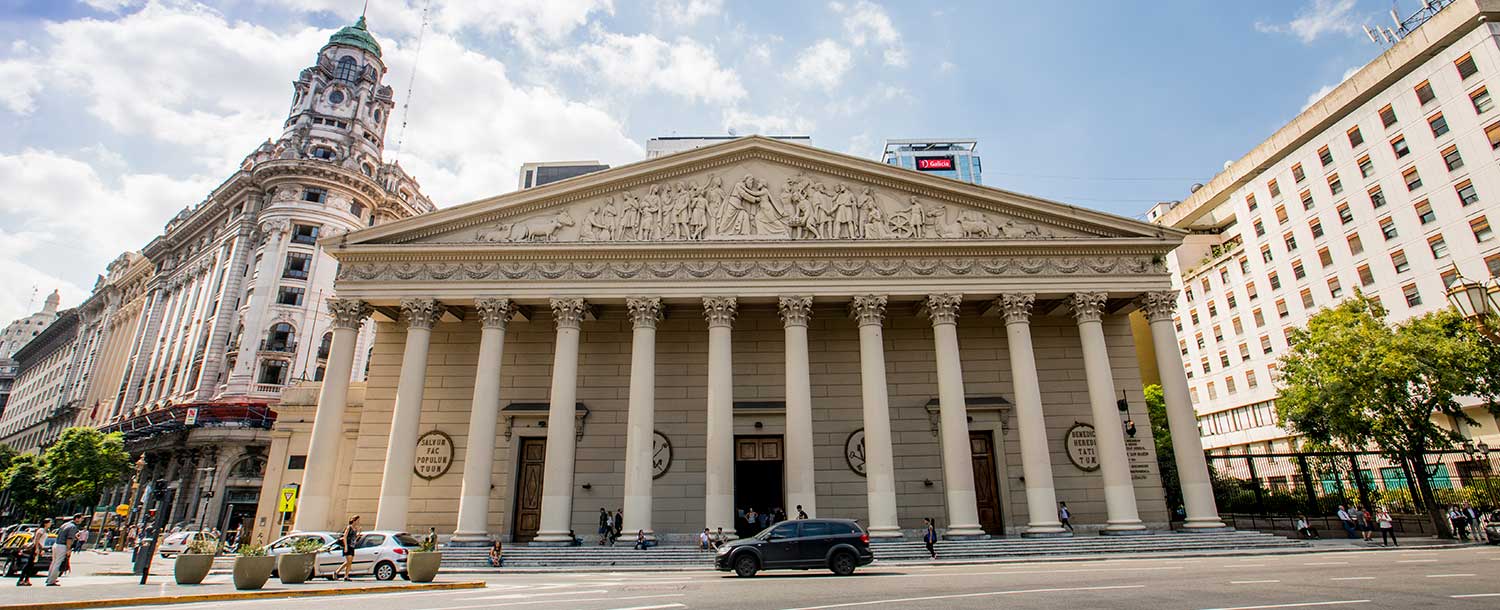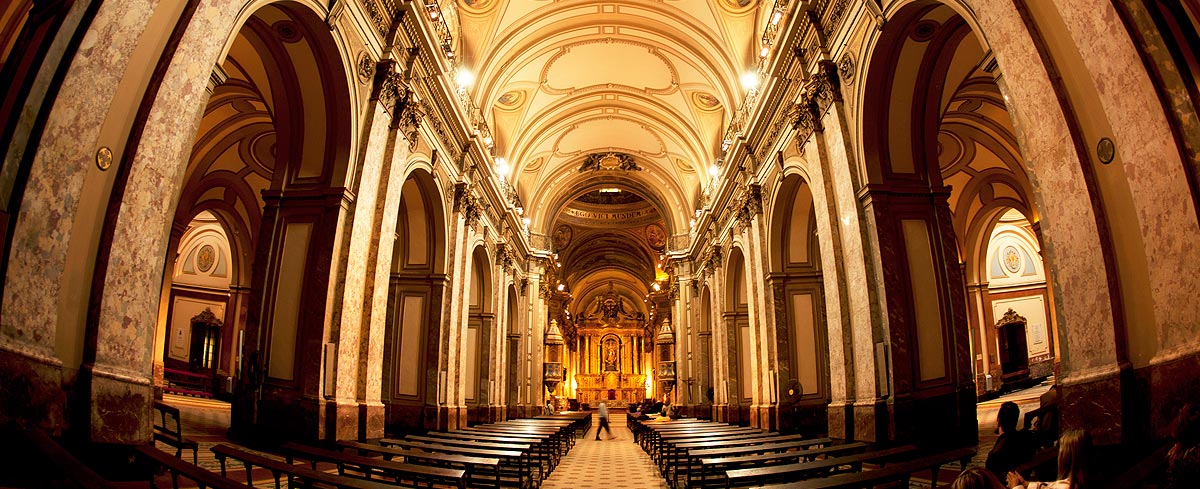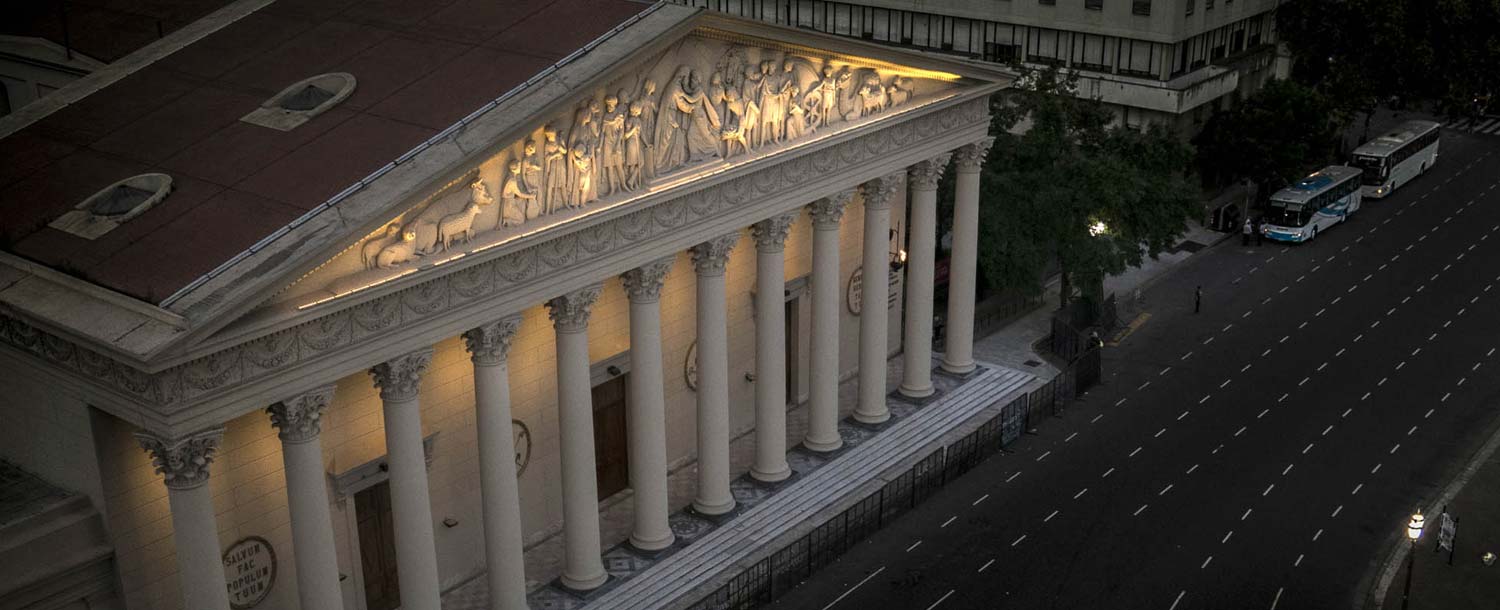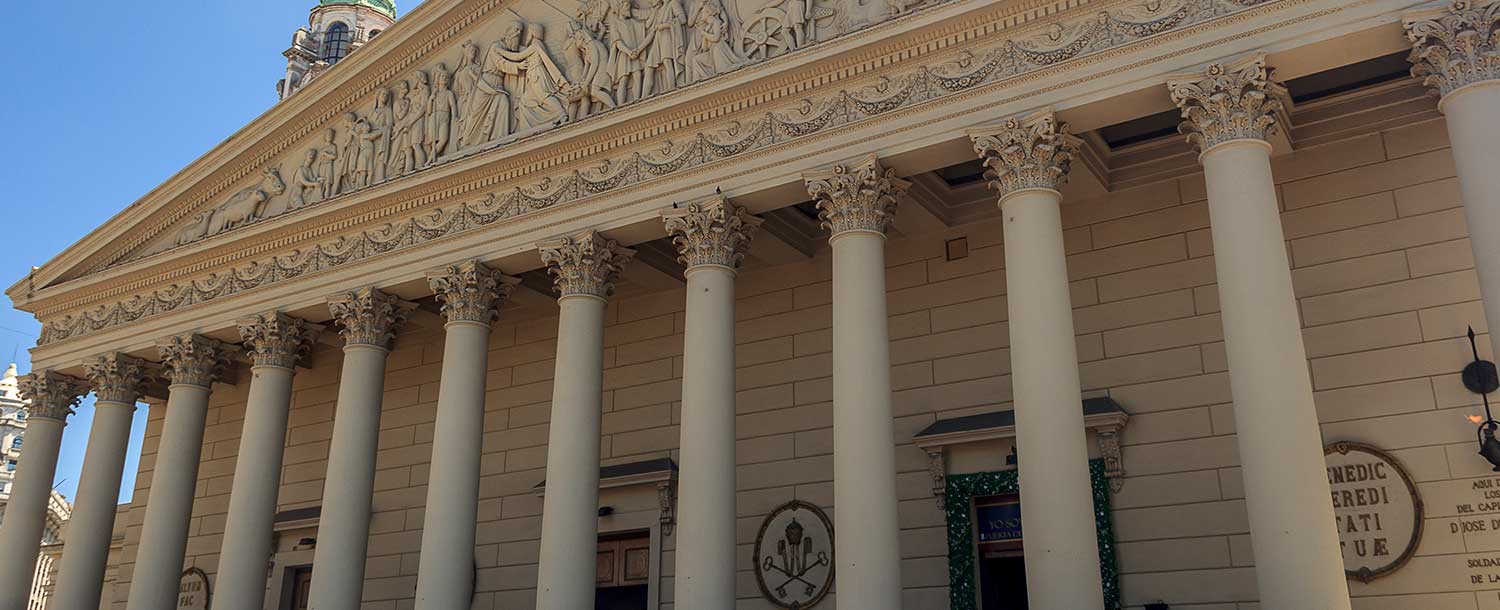The Metropolitan Cathedral
Present in tours
Facing the Plaza de Mayo, the Metropolitan Cathedral is the Catholic Church's main site in Argentina, and is where Pope Francis, as Archbishop Jorge Bergoglio, used to perform mass before assuming office in the Vatican in 2013. In Bergoglio's honour, the Cathedral now houses the Pope Francis Museum, which exhibits some of his personal and liturgical objects.
The Cathedral’s history is a long and turbulent one. Since the first chapel on the same site was constructed in 1593 under the orders of the city’s founder Juan de Garay, the building has been redesigned and rebuilt seven times. The last construction, the one that we see today, was started in 1752 but not completed until the mid-nineteenth century.
You may be struck by the building’s façade, more reminiscent of a Greek temple perhaps than a Catholic church. The twelve Neo-Classical columns at the front represent the twelve apostles of Christ, supporting a triangular frontispiece. This frontispiece, in bas-relief, depicts the encounter between Jacob and his son, Joseph, in Egypt, and was intended as an allegory of the unity of the Argentine nation after civil unrest.
Behind the columns, the front wall of the Cathedral’s is adorned with religious symbolism, and a votive candle whose eternal flame recalls the liberator General Jose de San Martín and the Unknown Soldier during the Wars of Independence.
The Cathedral’s impressive interior décor - with its five naves and transept, surmounted by a 41-metre high vault - is in neo-Romanesque and neo-Baroque styles. Its floors are covered by Venetian mosaics and depict various religious symbols, like the passion flower or “mburucuyá” in its native Guaraní, which symbolizes the Passion of Christ.
Start out from the nave to the right. As you pass the third chapel you’ll find the mausoleum of San Martín and the Unknown Soldier. This marble pantheon is the work of French sculptor Louis-Robert Carrier-Belleuse. Around the sarcophagus, three female figures representing Argentina, Chile and Peru, recall the countries liberated by General San Martín. The grenadiers at the entrance to the tomb stand guard and pay homage to the founder of their institution.
Continue along the right lateral nave until you reach the altar of Saint Martin of Tours, the patron saint of the city of Buenos Aires. You will also encounter the image of the Virgin of Buen Ayre, after whom first the port and then the city were named. In her right hand, the virgin and patron saint of sailors holds a caravel, a light sailing ship commonly used in the fifteenth to seventeenth centuries.
The main gilt wood altarpiece depicts the Holy Trinity. It is one of a few remaining elements from colonial times, dating from 1785, and is in Rococo style. Another notable colonial sculpture is the Christ of Buenos Aires, the oldest sculpture in the Cathedral, carved by Portuguese sculptor Manuel do Coyto in 1671. You'll find it in the altarpiece of the lateral arm of the transept.
A quirky feature of the Metropolitan Cathedral is that it hosts the image of the Christ of Footballers. In 1979, Héctor Scotta and Daniel Bertoni, two former Argentine national team players, donated to the Cathedral an image of the Cristo de Buen Amor – the Christ of Good Love - also known as the football player’s Christ. You can find him in the left nave, next to the crypt.
Before leaving the Cathedral, turn back and look up and you’ll see the main organ, an 1871 Walcker organ built in Germany, with more than 3,500 pipes.





